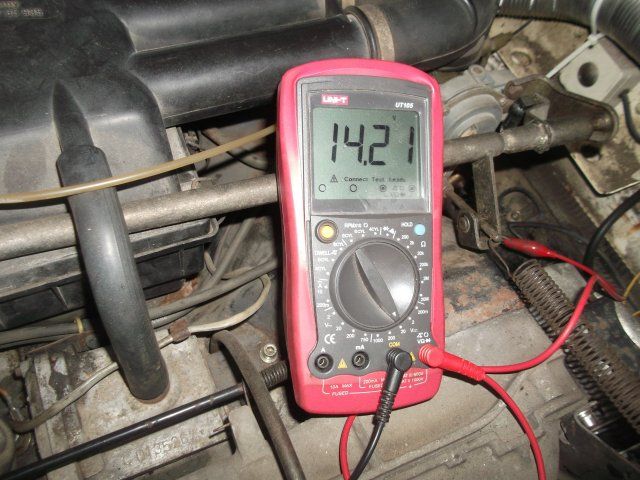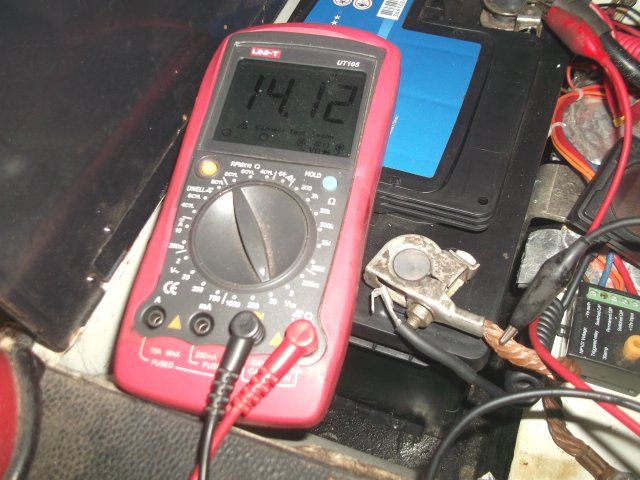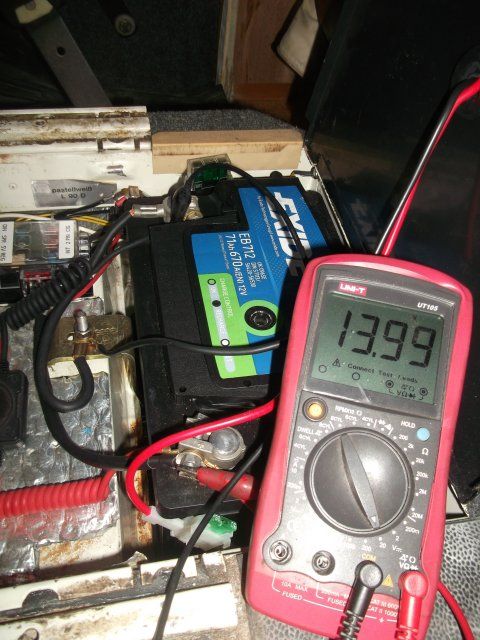WLC wrote:{color=#FFFFFF}.[/color]
ghost123uk wrote:
My first plan to get it more efficient is to take a dedicated feed from the alternator, via a better quality relay, to the leisure battery.
What's your thinking behind the relay please John

{color=#FFFFFF}.[/color]
WLC wrote:ghost123uk wrote:When I bought my new regulator it was advertised as 14.5 Volt, but on testing immediately after fitting) it was only 14.1 Volts

I would like a "proper" 14.5 Volt one, (or run the lot off a Sterling charger if I could get one for around the same price

)
What do you reckon to returning your duff alternator / regulator under guarantee for a new one John {color=#FFFFFF}.[/color]

OK, to be serious, though firstly I am intrigued by your use of "white on white" colour hex html codes to hide full stops in your posts and
all of the text in your pm's ?

= Very James Bond

(I have highlighted them by changing the bracket styles to non html above) ?
Re returning the regulator = Bought it too long ago. They might argue it was within tolerance range. Other factors, load and/or my alternator might be contributory factors. They are so cheap it's not worth the trouble (emails, post & packing) etc.
Re the relay. A normal spit charge relay only allows the 2 batteries to be linked when the engine is running and hence the charge goes to both batteries. At rest the leisure battery is isolated and only feeds your camping loads, leaving your main battery fully charged, ready to fire up the engine. I bet you knew all that

Re my "first plan" as above. A ~64 Amp red wire (6mm squared) would be added to the alternators normal ("B+") terminal and would be fed forward to the input of the split charge relay. This means the relay and hence the leisure battery would get a more direct feed with less "joins" in it resulting in less resistance and therefore less Voltage drop. In turn the resulting higher Voltage at the leisure battery (than is currently present) would provide a better/faster/more complete charge to the leisure battery. I would use a better quality relay than the one I currently have as a better quality one will have less Voltage drop through it's internal wiring and switching contact points.
So, the relay remains, to keep the circuits isolated when the engine is not running.
My proposed alternative to my "first plan" uses the split charge relay, with no extra wire from the alternator, but it's output would feed power to the inverter (instead of the leisure battery), so it automatically turns the inverter on when the engine is running. A "smart" 10 or 20 Amp mains battery charger would be run off the output of the inverter and provide "smart" charging to the leisure battery, in much the way the expensive Sterling battery to battery chargers do (more reading on them
HERE).
This last plan is more a case of musing over ideas. But the more I think about it the more I reckon I might give it a whirl as the normal charge regulation from a normal alternator is not very "smart", as in it was not really designed to charge leisure batteries, which have a different usage pattern to a stater battery.



